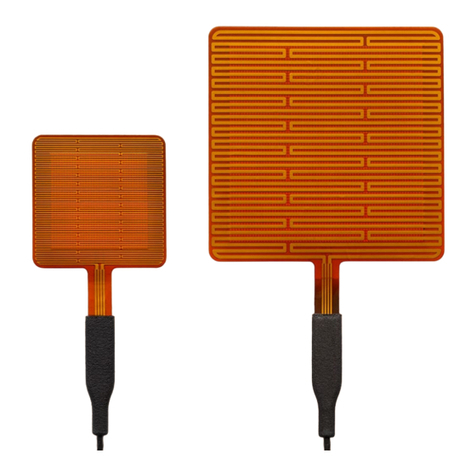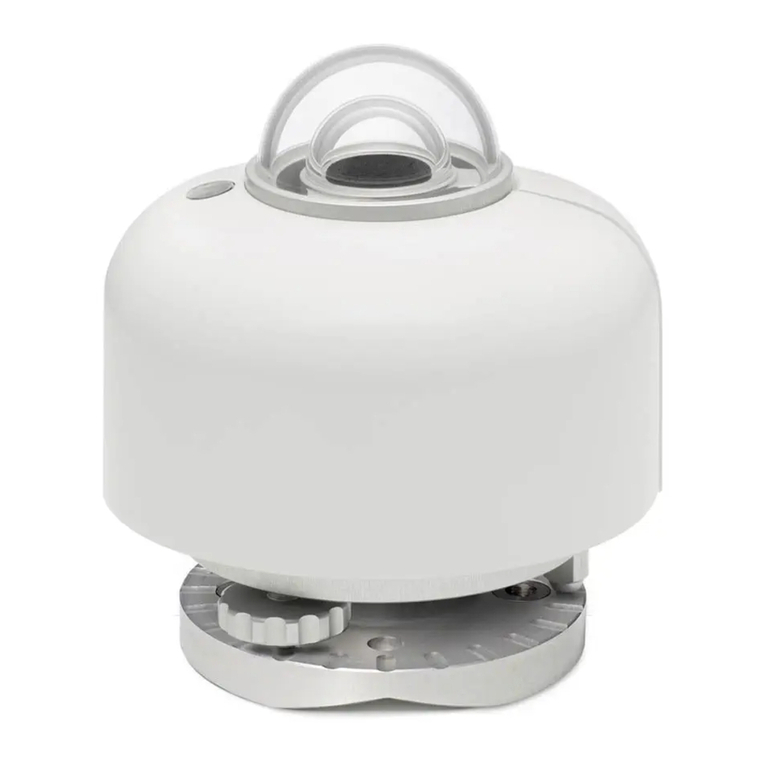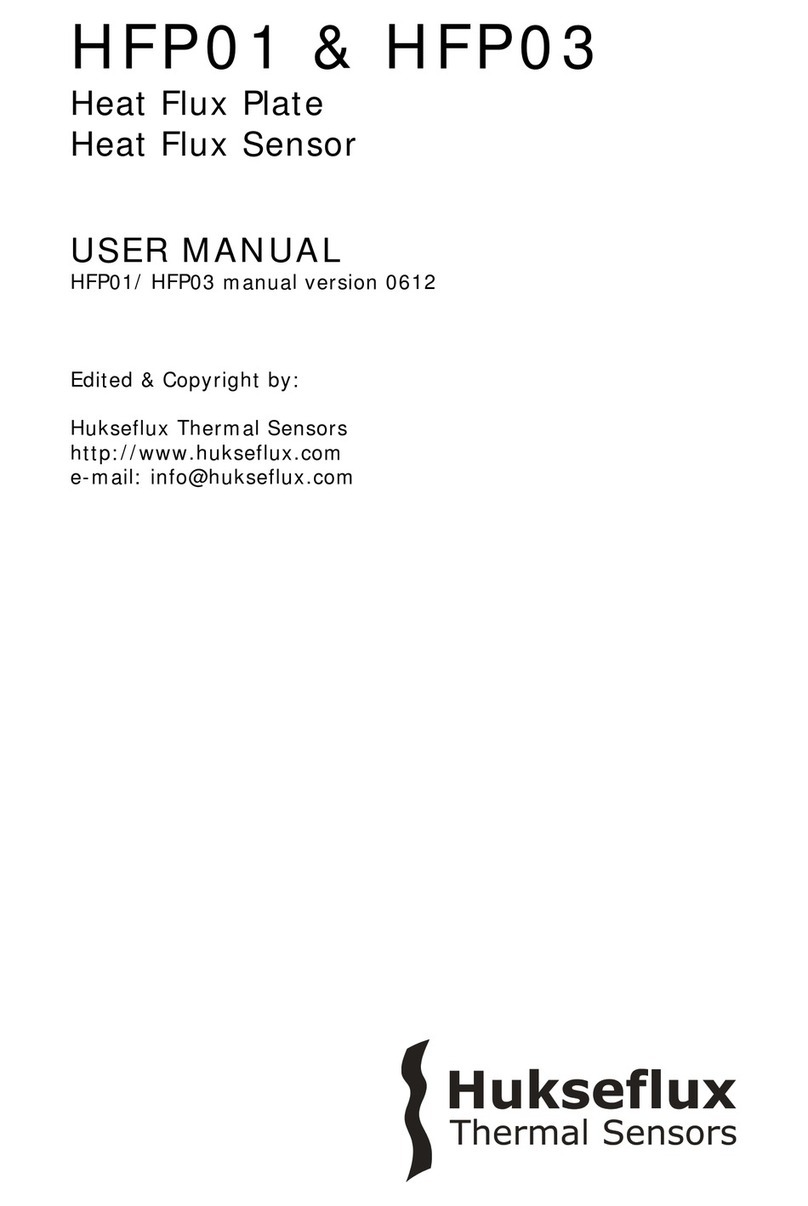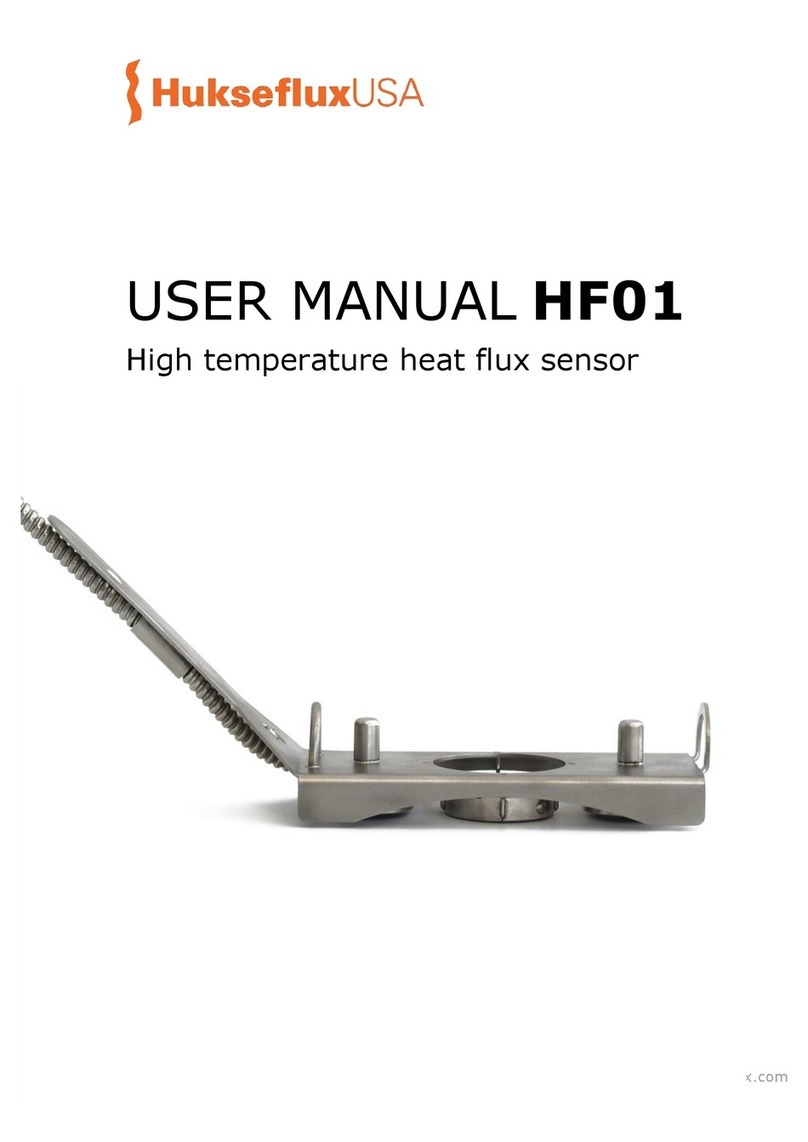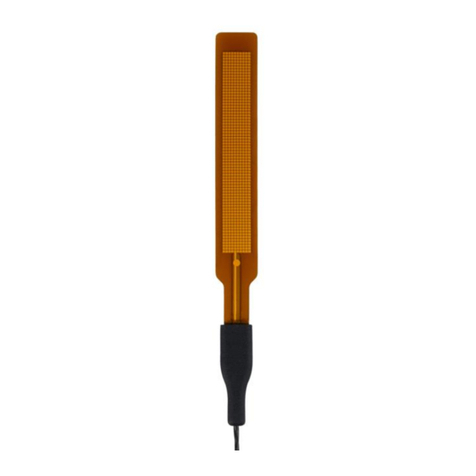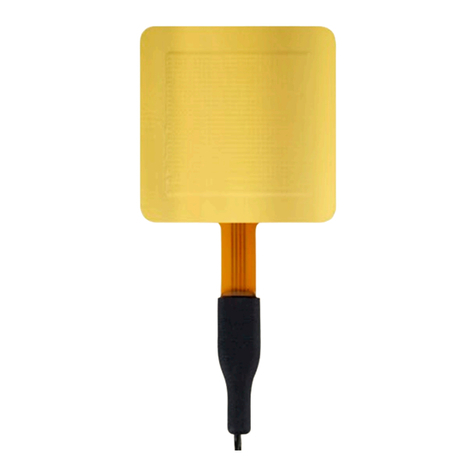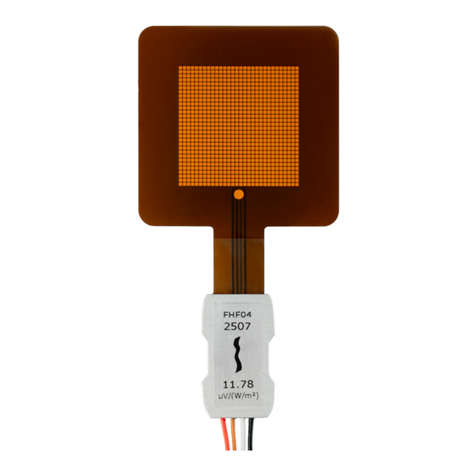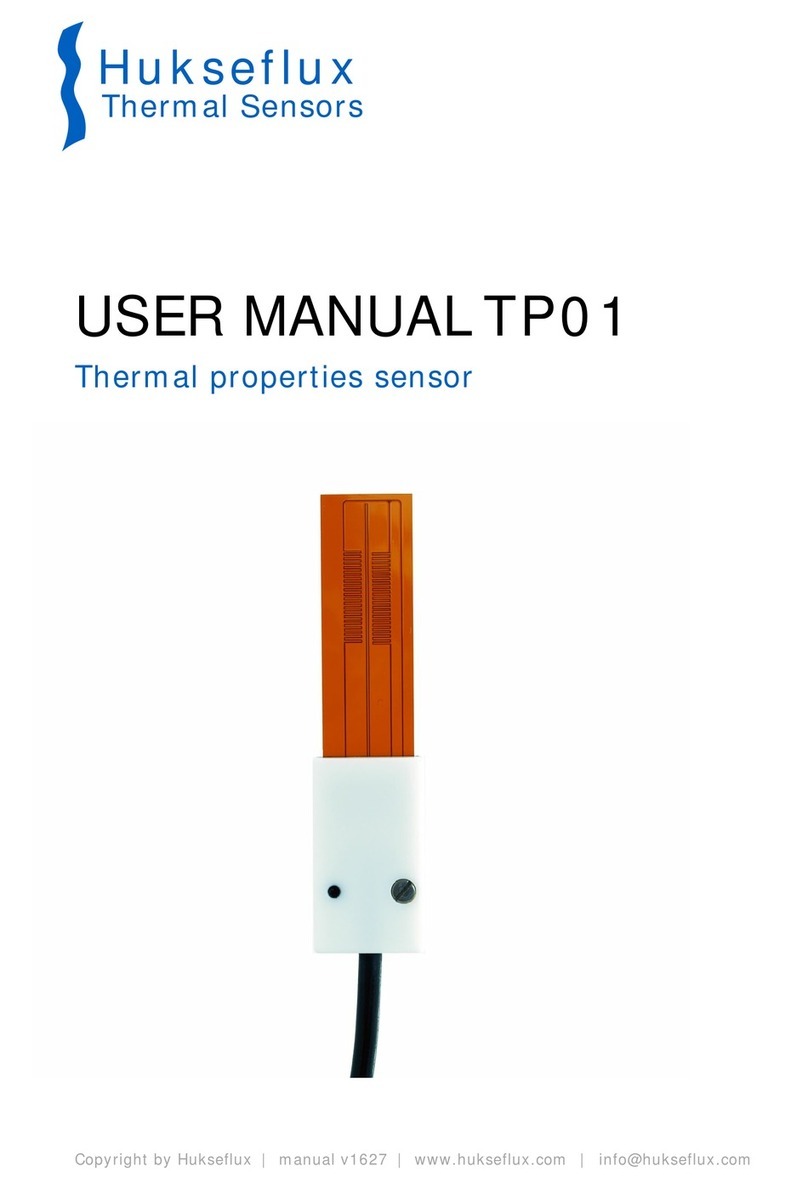
IHF02 manual v1907 5/35
Introduction
IHF02 ultra sensitive industrial heat flux sensor measures heat flux and temperature,
typically in industrial high-temperature environments. The instrument is waterproof,
withstands high pressures and is extremely robust. IHF02 is 25 times more sensitive
than model IHF01, making it suitable for use at relatively low heat flux levels. It replaces
model HF01 high temperature heat flux sensor. IHF02 complies with industrial safety
standards, such as CE and ATEX for explosive areas, and is particularly suitable for
trend-monitoring and comparative testing.
IHF02 measures heat flux and surface temperature of industrial equipment like furnaces,
boilers, fluidised beds, distillation columns and ovens. The sensors inside IHF02, a
thermopile and a type K thermocouple, are protected by a fully sealed stainless steel
body. It is suitable for long-term use at one location as well as surveys at multiple
locations. IHF02 measures heat flux through the object on which it is mounted, in W/m2,
as well as the temperature in °C. An optional magnet frame is offered for easy mounting
on magnetic surfaces.
IHF02 is 25 times more sensitive than model IHF01, so that, with the same
measurement accuracy of its output voltage, it can be used to measure much lower heat
flux levels. When equipped with the optional magnet frame and optional black coating,
IHF02 replaces model HF01 high temperature heat flux sensor.
Figure 0.1 IHF02 ultra sensitive industrial heat flux sensor
